In August, a McDonnell Douglas F-15C (serial number 85-0114) arrived at the National Air & Space Museum’s Steven F. Udvar-Hazy Center in Chantilly, Virginia.
Although every F-15 Eagle could be considered a special aircraft, the particular fighter jet was credited with two MiG kills during Operation Desert Storm in 1991. Flown by Captain Cesar “Rico” Rodriguez, United States Air Force, it was the first F-15 Eagle to be added to the collection of the National Air and Space Museum.
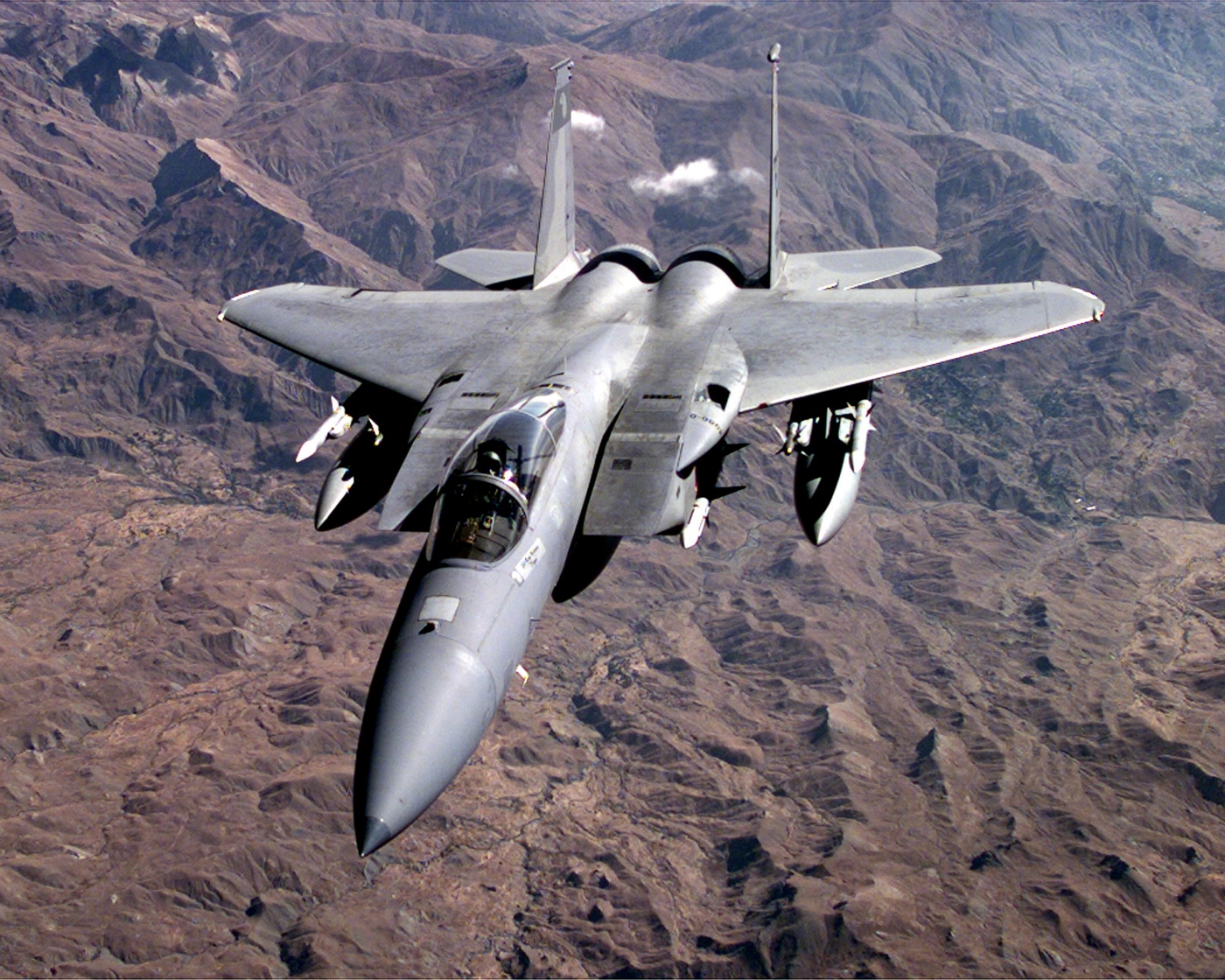
“We are thrilled to accept the F-15C into the museum’s collection,” said Michael Hankins, modern military curator at the museum. “The Eagle is one of the most iconic American fighter aircraft of the last 50 years, and this particular F-15 has powerful stories to tell.”
In fact, many F-15s have stories to tell.
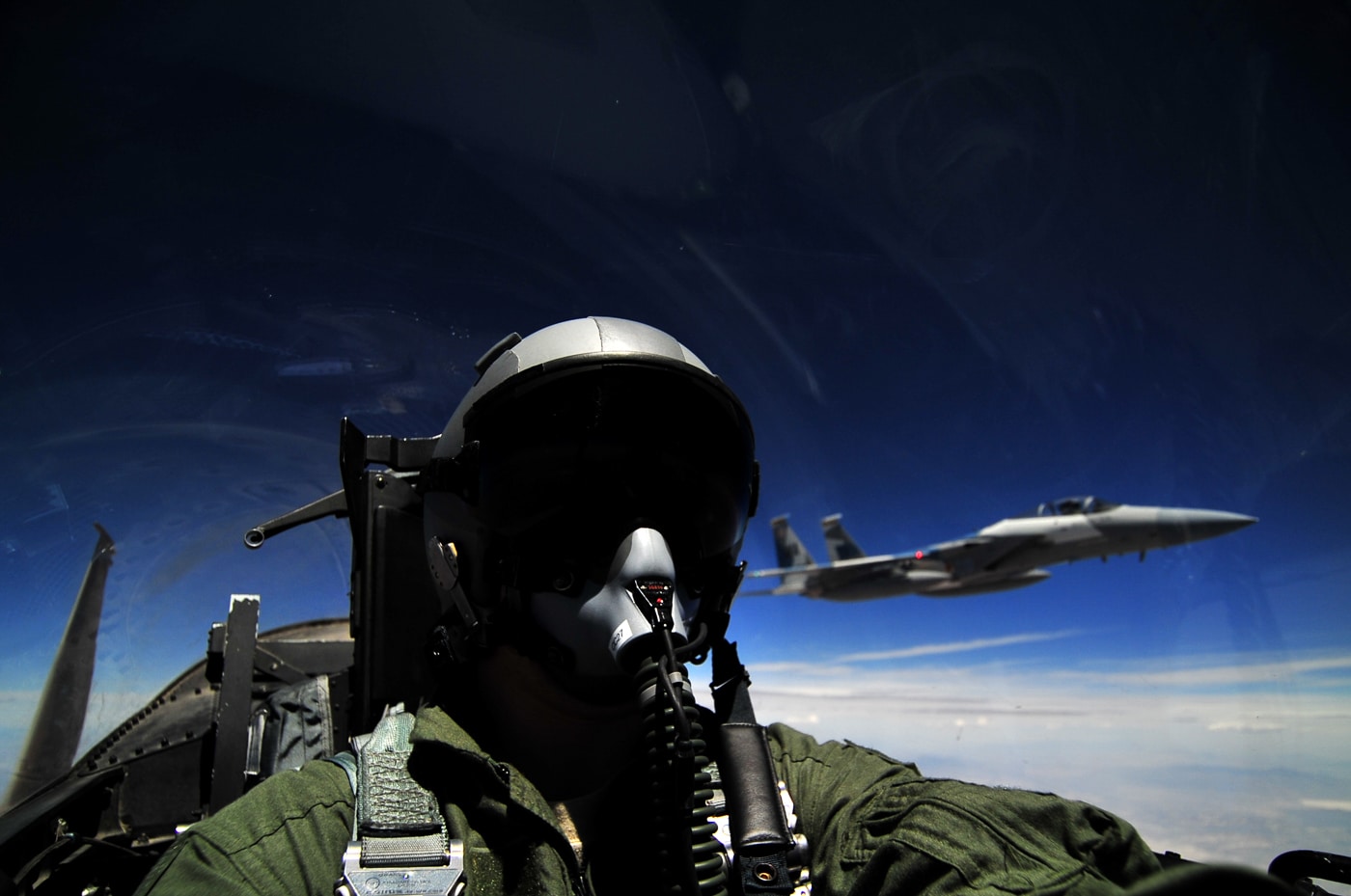
The twin-engine, all-weather tactical fighter has achieved more than 104 victories, an already impressive number that is even more notable, as no Eagle has been lost in aerial combat. Nearly 1,200 were produced, and while originally designed to serve primarily as an air superiority fighter, it proved to be a versatile multi-role aircraft that excelled in both air-to-air and ground-attack roles. While the original F-15 Eagle is showing its age and the old warbird is heading toward retirement, it has led to the development of the F-15E Strike Eagle and the F-15EX Eagle II.
The F-15 Eagle Is Hatched
The origins of the F-15 date back to the 1960s, with the emergence of the Soviet Union’s Mikoyan MiG-23 (NATO reporting name “Flogger”) and MiG-25 (NATO reporting name “Foxbat”), which heightened the United States Air Force’s concern that it was falling behind in fighter aircraft development. The Air Force had already begun funding the development of a replacement fighter, and in 1969, McDonnell Douglas was selected to build a new aircraft to compete with the best the Soviets had to offer.
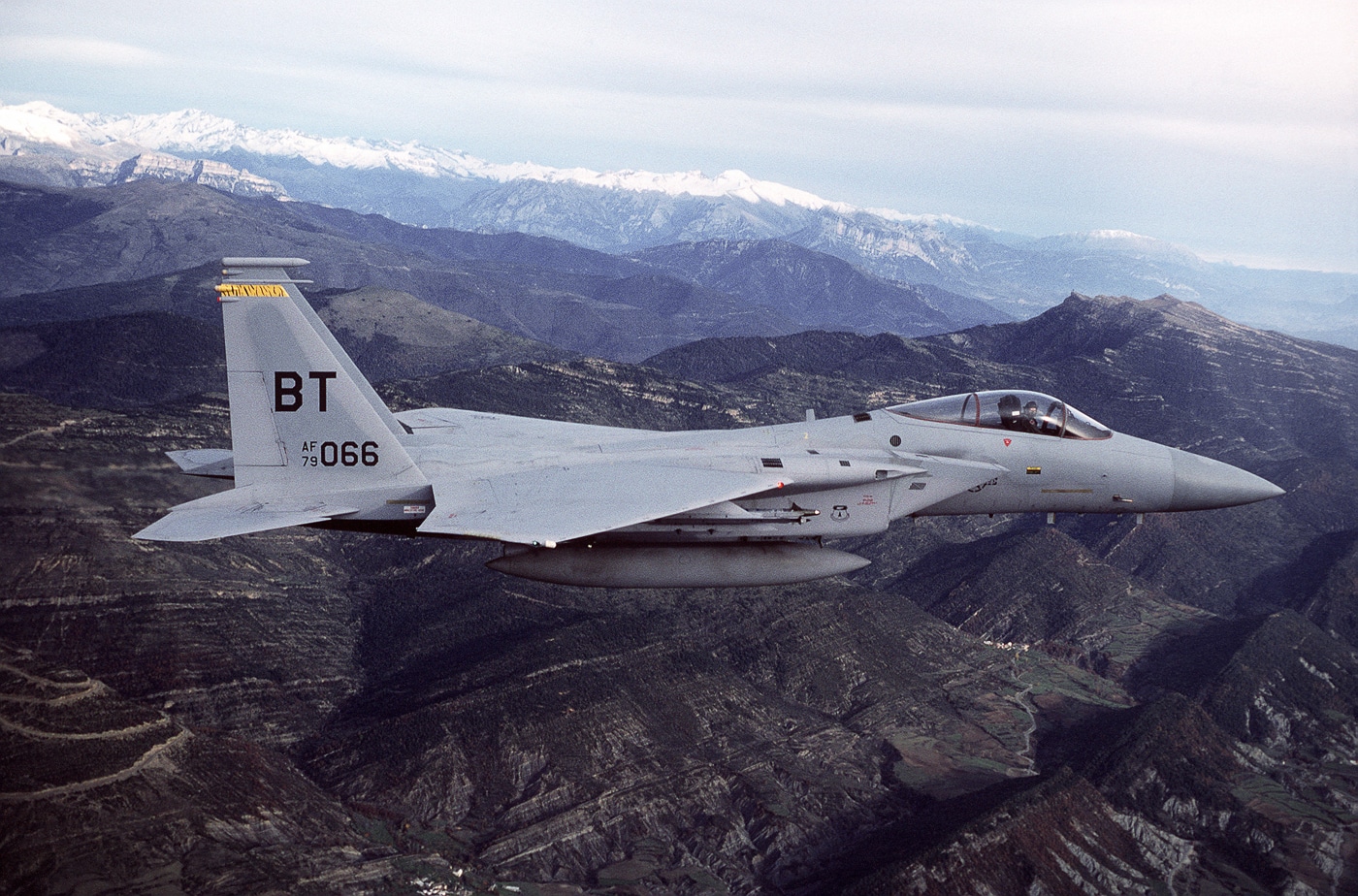
Unlike the Mikoyan aircraft, the F-15 was designed for unrivaled capability in close combat, and until 1976, there was no attempt to explore other missions beyond air-to-air combat and air supremacy.
The basic design of the fighter was built around two new augmented turbofan engines in a wide-body rear fuselage, and a wingspan with an area of no less than 530 square feet. The wing further featured a sharp taper on the leading edge and conical camber outboard, plain flaps and ailerons, structural beams projecting aft of the engine nozzles to carry the fixed fins, and low tailplanes with large inboard dogteeth.
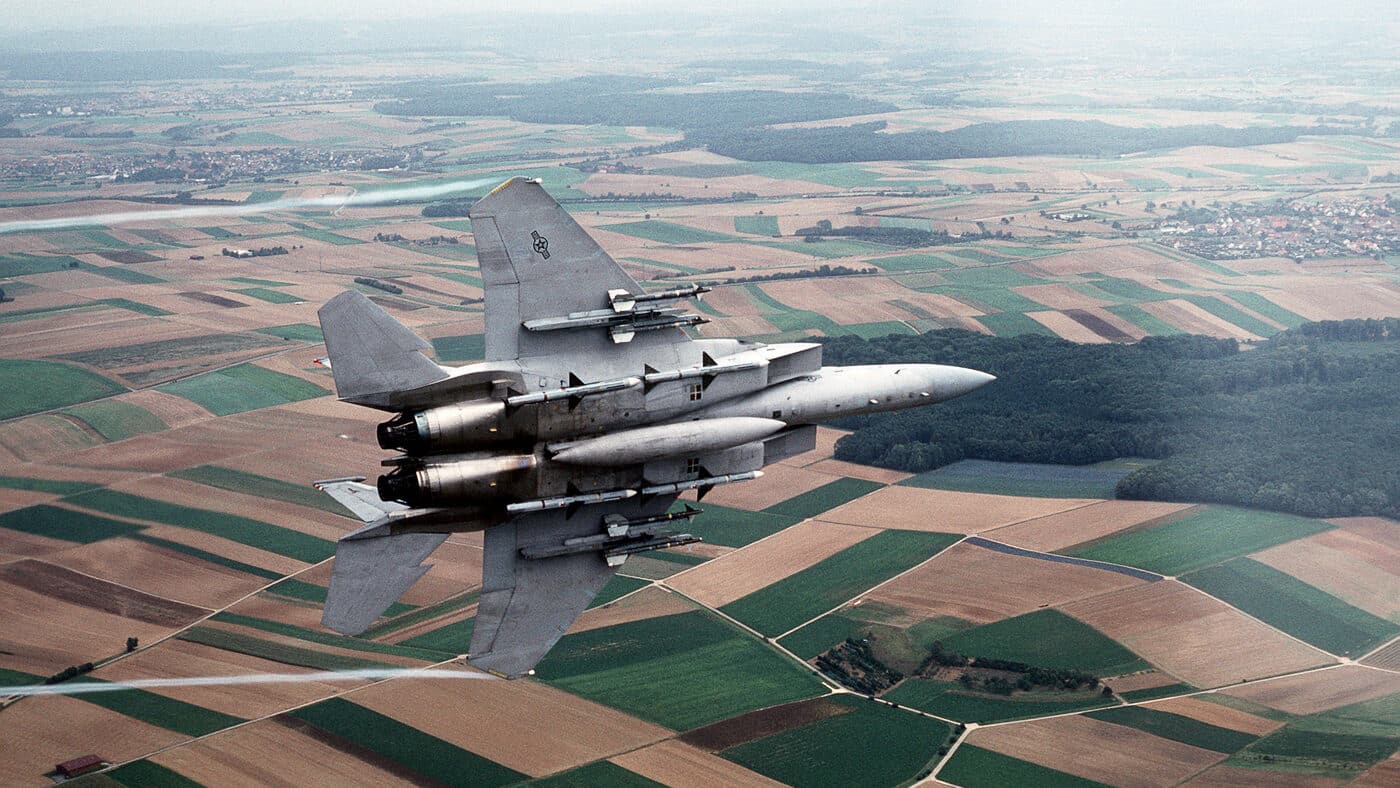
Along with an entirely cutting-edge airframe, the program saw the development of a new engine, designed and built by Pratt & Whitney, and a Hughes APG-63 X-band pulse-Doppler radar, as well as a new 25mm main gun that was originally intended to fire caseless ammunition. However, the latter feature was dropped during its troubled and prolonged development cycle.
As the Eagle emerged, it was quickly respected for being among the best air superiority fighters of its day. Its chief attributes were its combat maneuverability, while it could out-fly nearly all of its contemporary U.S.-made aircraft without using its afterburner. It was further equipped with a head-up display, weapons selectors, and quick-fire capability that gave F-15 pilots an edge in aerial combat.
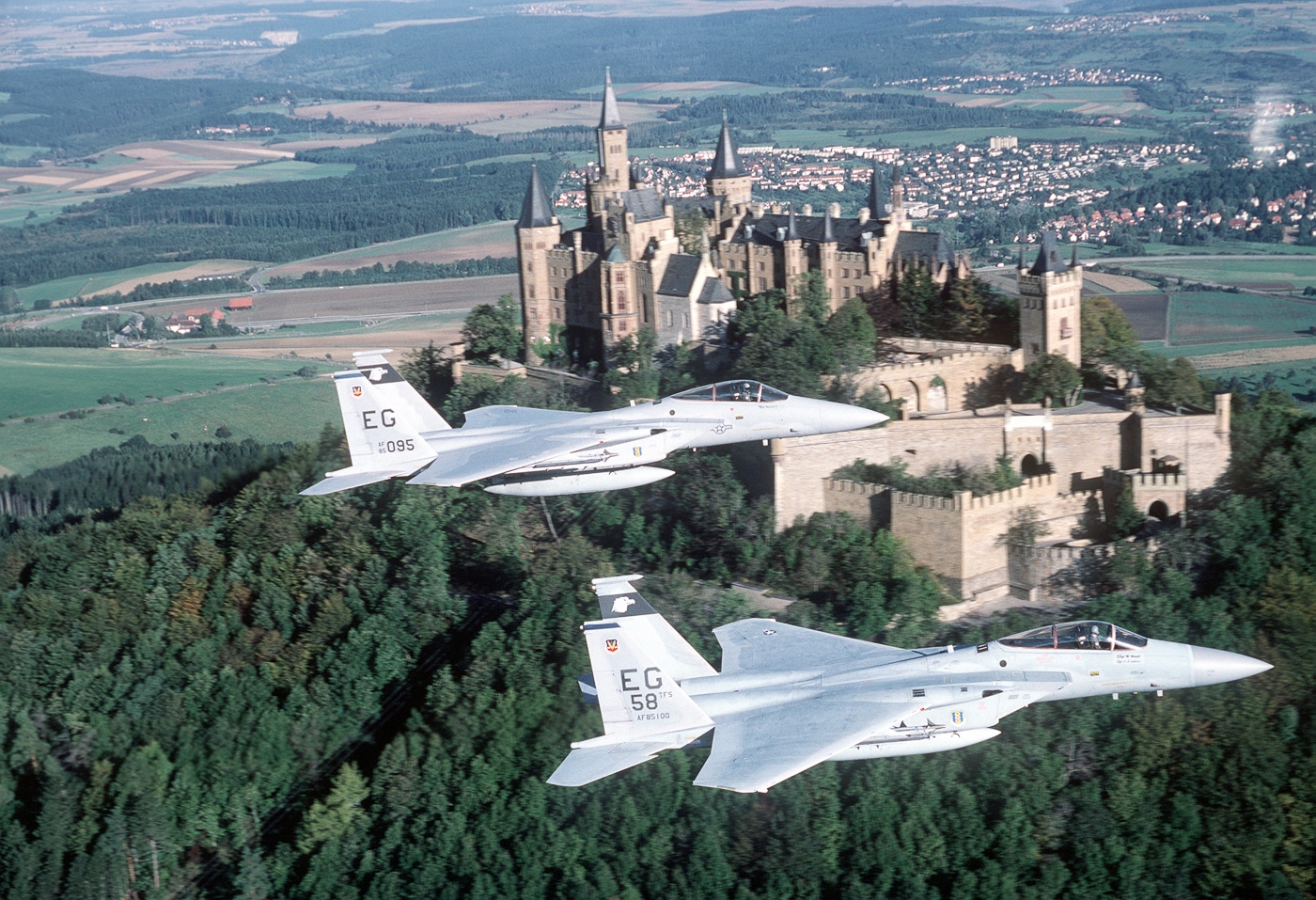
In addition, it was noted for its long-range capability.
The already reasonable 11,200 lbs. of internal fuel capability could be tripled by the use of a FAST (fuel and sensor, tactic) pack on each wing. The Eagle was a true warbird by design, armed with one 20 mm M61A-1 gun with 940 rounds, while its fuselage was outfitted with flank ejectors for four AIM-7 Sparrows or AIM-120 AMRAAM, and a centerline pylon for a 4,500-lb. or 500-gallon payload. That was later upgraded to our AIM-9 Sidewinder and either four or eight AIM-120 AMRAAMs, carried externally.
As noted by the U.S. Air Force, “The first F-15A flight was made in July 1972, and the first flight of the two-seat F-15B (formerly TF-15A) trainer was made in July 1973. The first Eagle (F-15B) was delivered in November 1974. In January 1976, the first Eagle destined for a combat squadron was delivered.”
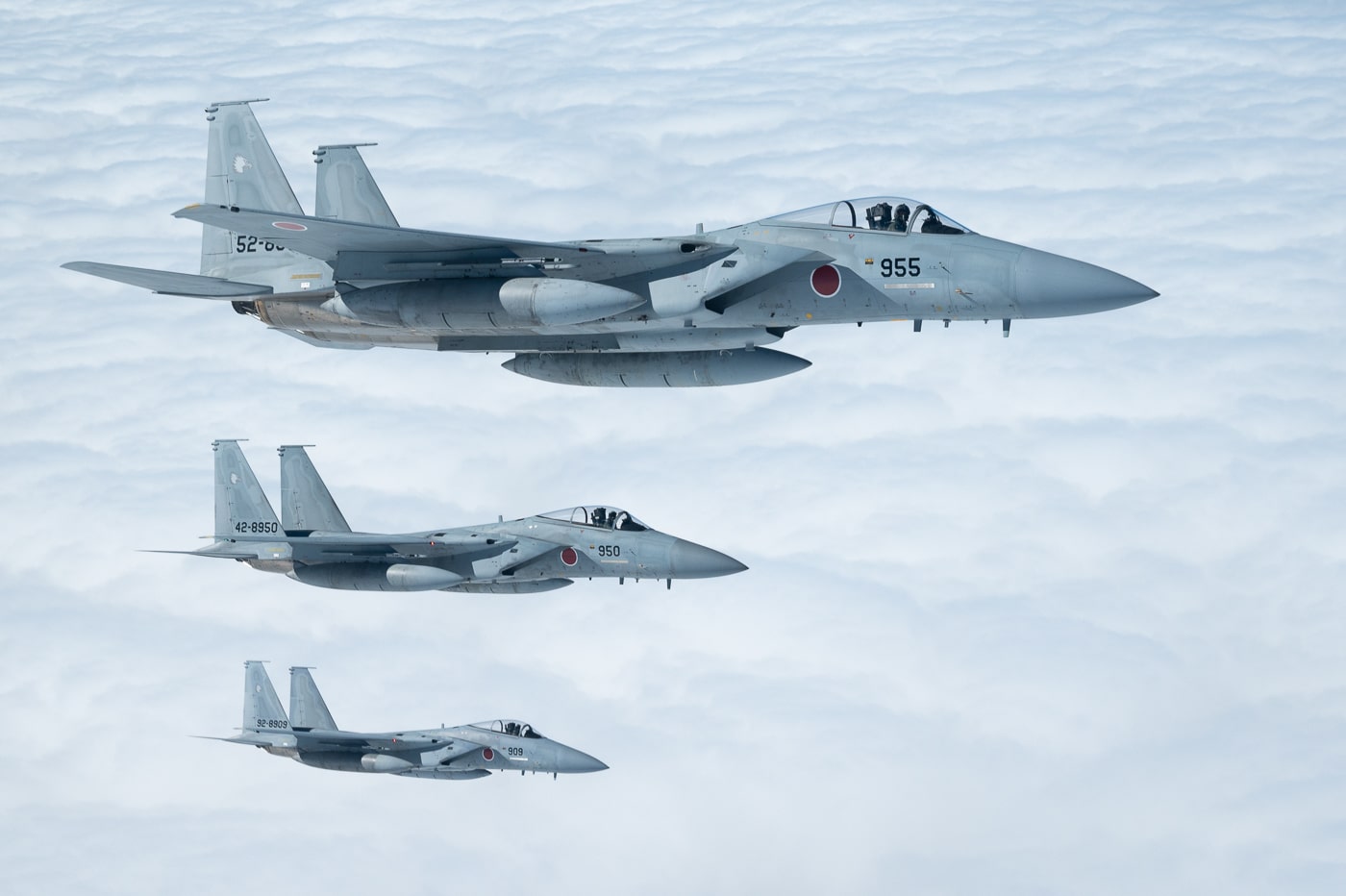
The initial contract called for the construction of 18 production series aircraft to be single-seaters and two two-seat trainers. Moreover, the United States Air Force wasn’t the only country to quickly recognize and appreciate the capabilities of the Eagle; it was also adopted by the Israeli Air Force, as well as by Saudi Arabia and Japan.
F-15C/D Models
McDonnell Douglas improved on its already impressive design. In 1979, the U.S. Air Force began receiving the upgraded F-15C (single-seat) and F-15D (two-seat) models, which featured the Production Eagle Package (PEP 2000) enhancements. It allowed the Eagle to carry 2,000 lbs. (900 kilograms) of additional internal fuel, as well as provision for carrying exterior conformal fuel tanks and increased maximum takeoff weight of up to 68,000 lbs. (30,600 kilograms).
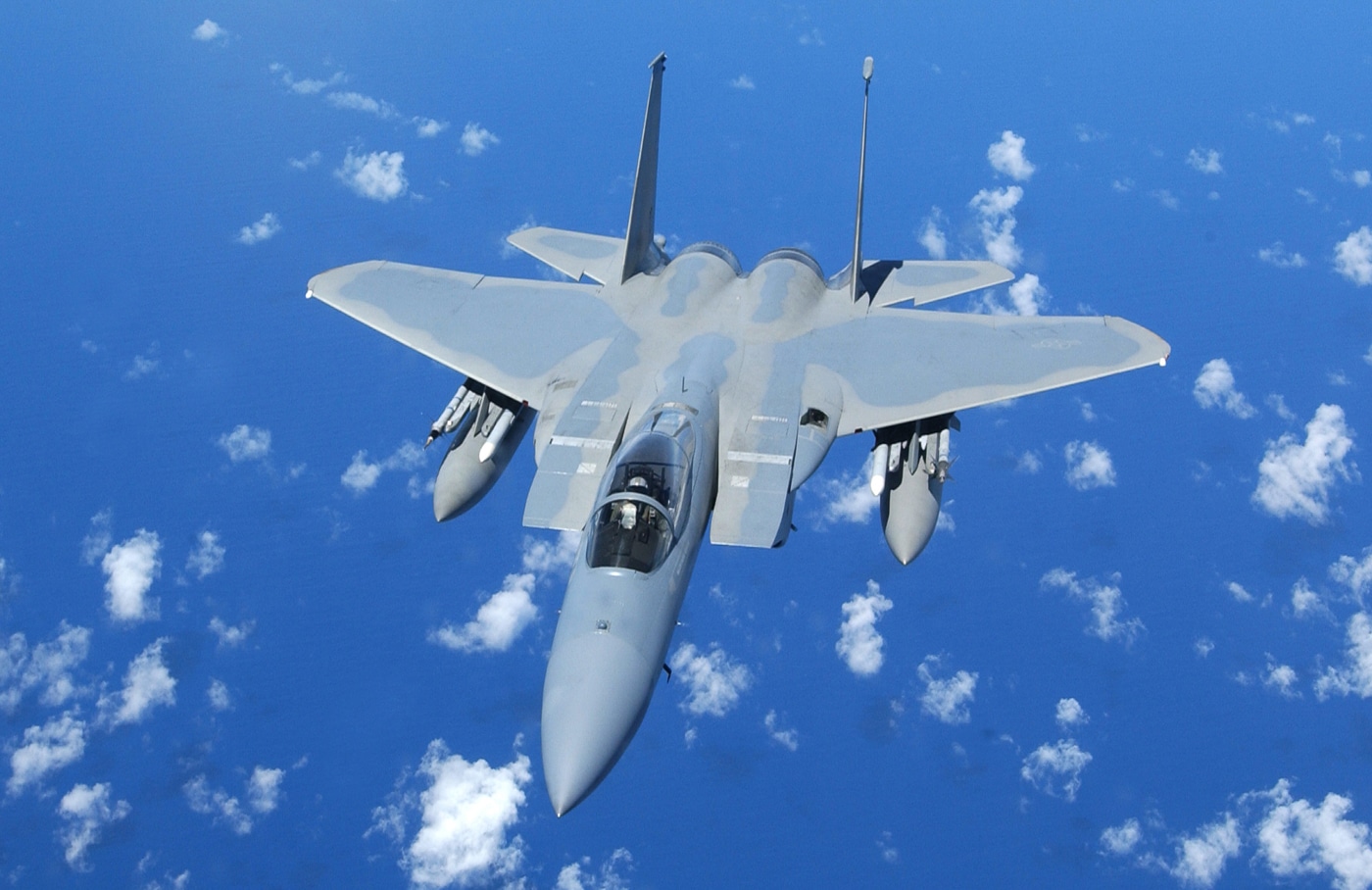
According to the Air Force, other updates to the F-15C included “an upgraded central computer; a Programmable Armament Control Set allowing for advanced versions of the AIM-7, AIM-9, and AIM-120A missiles, and an expanded Tactical Electronic Warfare System that provides improvements to the ALR-56C radar warning receiver and ALQ-135 countermeasure set. The final 43 included a Hughes APG-70 radar.”
F-15 Eagle in the Gulf War
As it was developed to combat Soviet aircraft, it is not surprising that the United States Air Forces Europe was an early operator of the F-15 Eagle in the 1980s. At its peak, there was a three-squadron wing at Biburg, West Germany, augmented by the 32nd Tactical Fighter Squadron based at Soesterberg (Camp New Amsterdam) in the Netherlands.
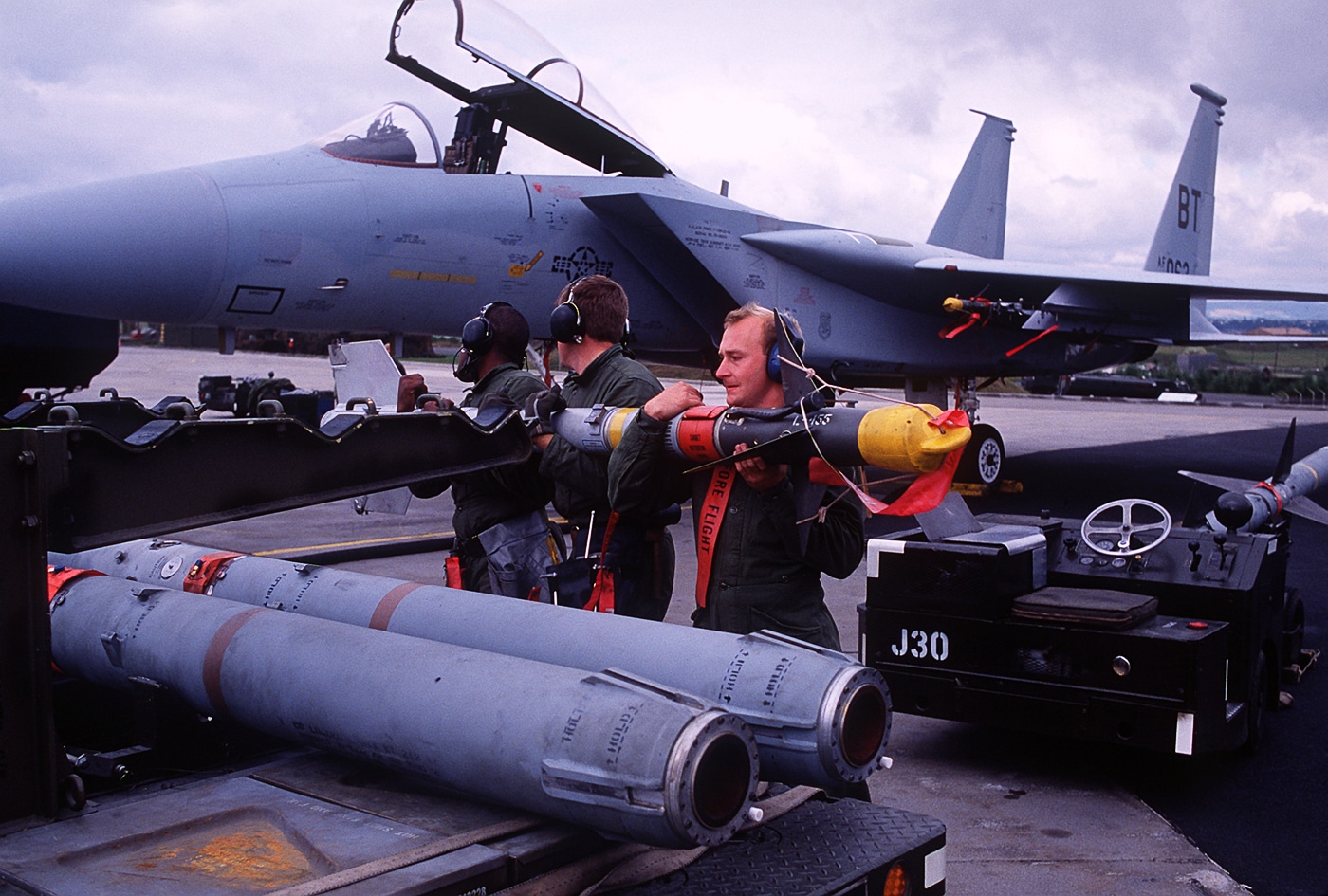
The F-15 never engaged Soviet fighters directly, but it did confront Soviet-made MiGs during Desert Storm. The F-15C and F-15D models were among the U.S. military aircraft that took part in the 1991 Gulf War against Iraq, with the D variants typically used for photo and video support, transmitting live video from the air to aid in the coordination of attacks.
The American-led coalition already had superior numbers to the Iraqi Air Force, but the allies also had better control, quality, and training. Thanks to the sophisticated, long-range radar and advanced command and control capabilities of the Boeing E-3 AWACS, coalition pilots knew exactly what was going on in the skies over the war zone. That was far more than what Baghdad could have hoped for, and it is one reason why few Iraqi aircraft took to the air. When they did, they were knocked out of the sky, primarily by the F-15 Eagles of the U.S. Air Force.
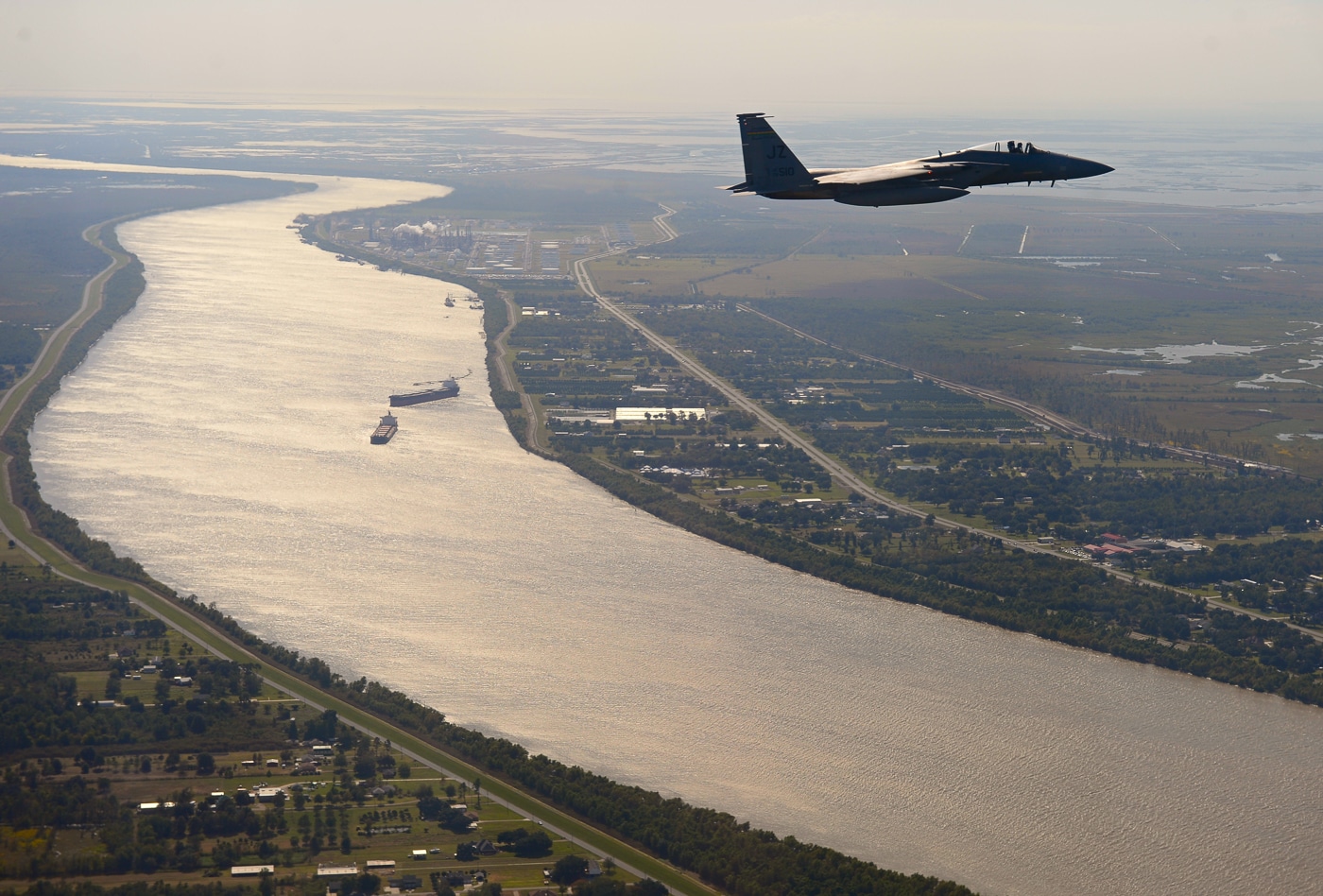
Captain Jon Kelk, United States Air Force, is credited with shooting down an Iraqi Mikoyan MiG-29 (NATO reporting name Fulcrum) on January 17, 1991, scoring the first confirmed kill with an American-operated F-15.
At least 120 in service with the U.S. Air Force participated in the Gulf War, joined by four Saudi Squadrons. In total, Eagles were credited with 35 out of the 41 coalition aerial victories during Operation Desert Storm, including the only two non-American kills, with one being by the Royal Saudi Air Force’s No. 13 Squadron.
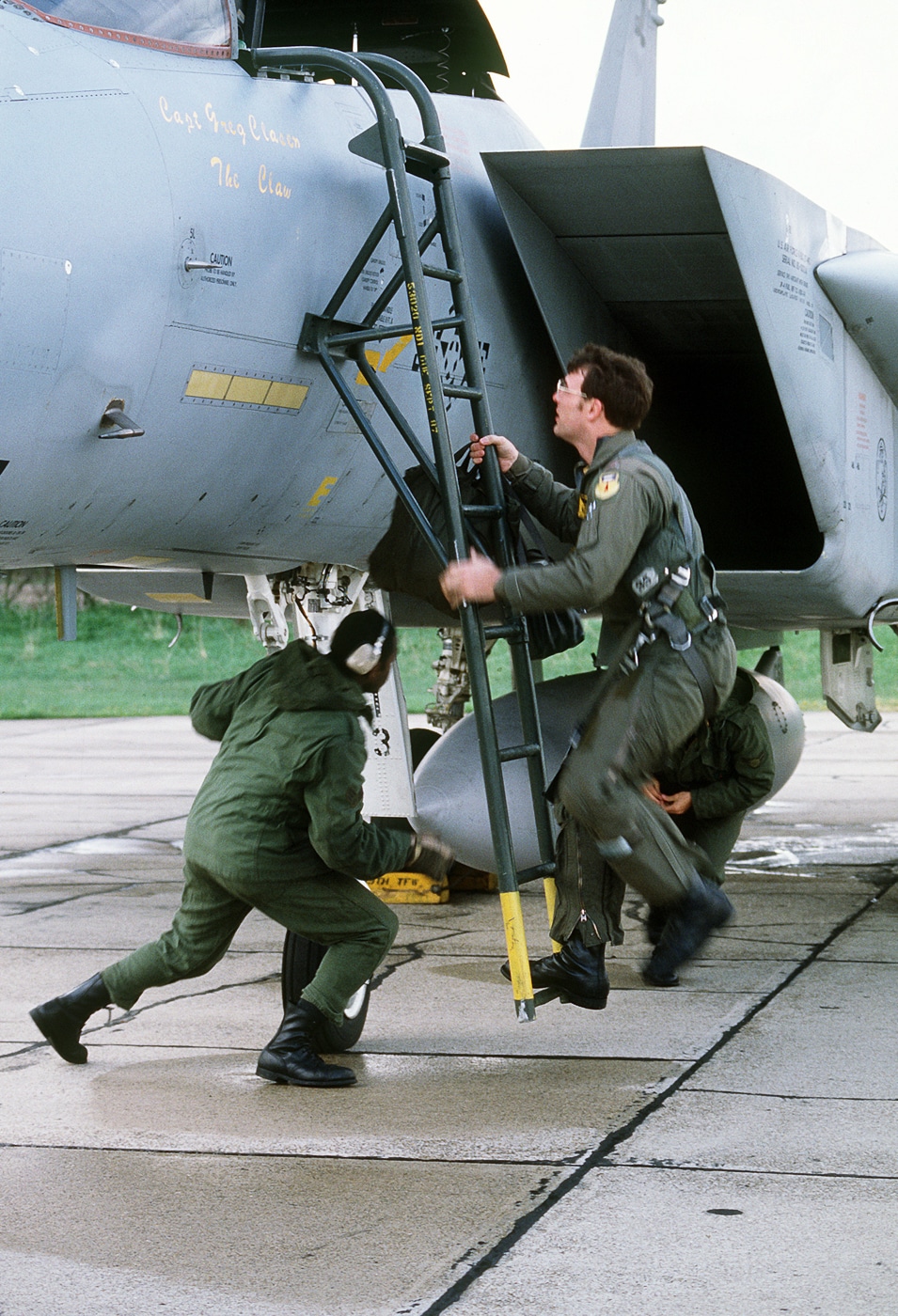
The most successful unit of the brief conflict in the Middle East was the U.S. Air Force’s 58th Tactical Fighter Squadron, part of the 33rd Tactical Fighter Wing, based at Eglin Air Force Base (AFB), Florida, which operated out of Tabuk Air Base during the conflict.
During the Gulf War, Eagles carried a variety of weaponry, including up to four AIM-9 Sidewinders. However, the majority of enemy kills were attributed to the older yet still capable AIM-7 Sparrow radar-guided missiles.
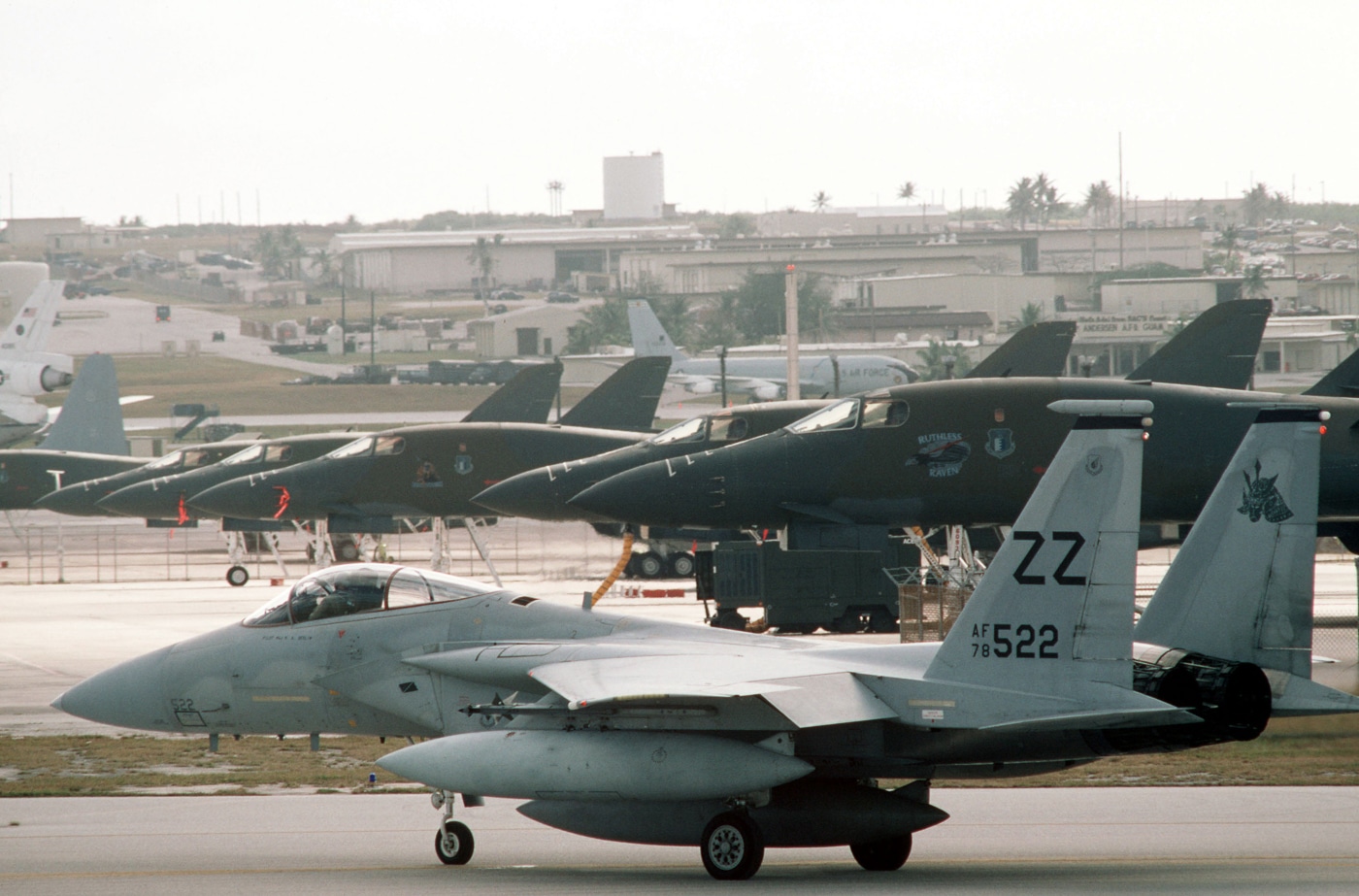
The U.S. Air Force’s F-15 Eagles would see further deployments during operations such as Southern Watch, which maintained the no-fly zone in southern Iraq; Provide Comfort in Turkey; Allied Force in Bosnia; Enduring Freedom in Afghanistan; and Iraqi Freedom in Iraq. However, by the 2020s, the Eagle was showing its age.
As of August 2025, all F-15A/B/D models were retired (with some D models converted to the F-15E Strike Eagle), and the F-15C Eagle continues to be phased out, with few remaining with Air National Guard (ANG) units.
Israeli F-15
The story of the F-15 wouldn’t be complete without telling of its role in the Israeli Air Force (IAF). In fact, it was in service with the IAF, where it truly became a warbird like practically no other.
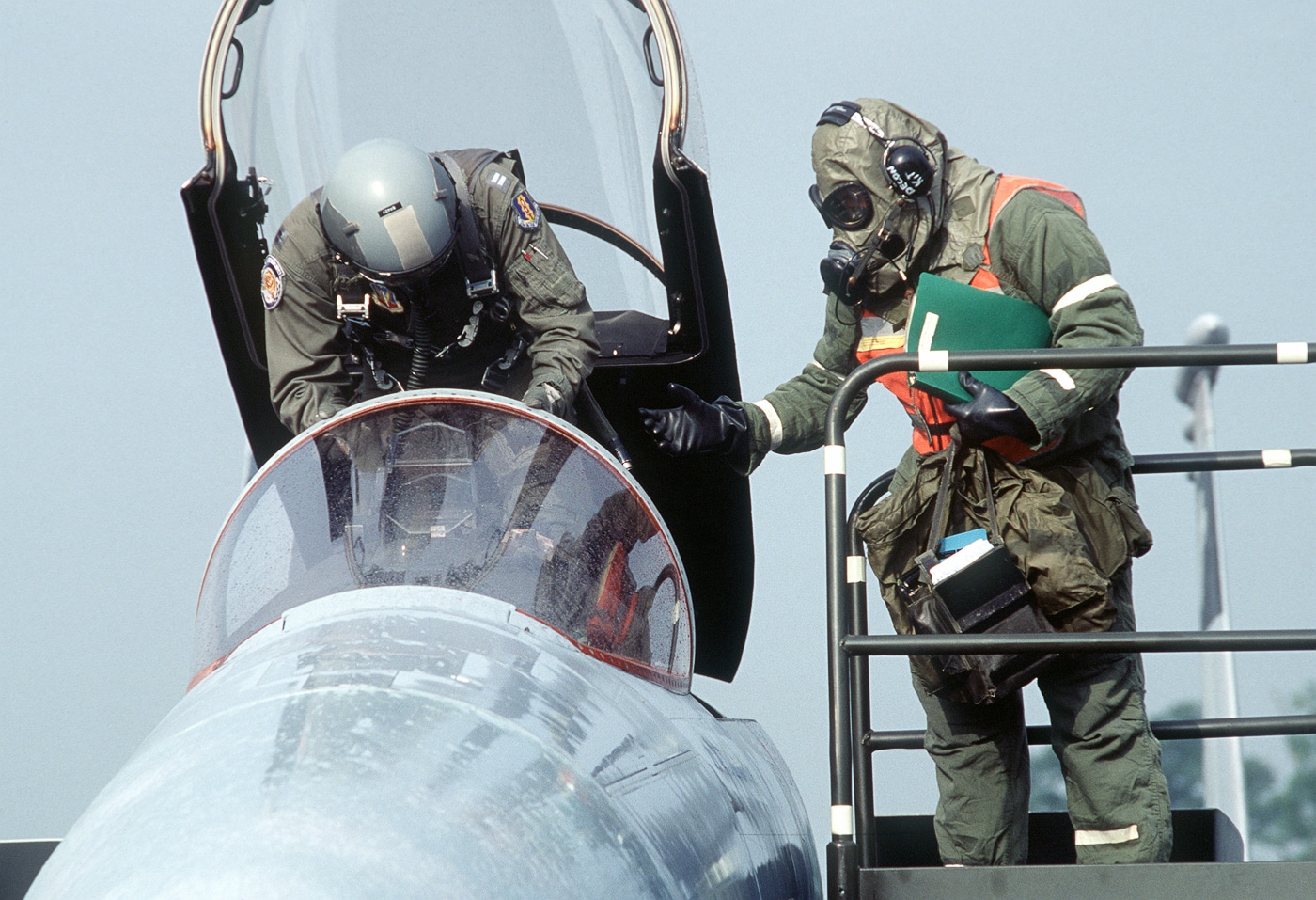
The State of Israel was the first foreign operator of the F-15 Eagle, which it adopted in late 1976. Just over three years later, the Eagle drew its very first blood, scoring an aerial victory. On June 27, 1979, IAF pilot Moshe Melnik shot down a Syrian Mikoyan-Gurevich MiG-21 (NATO reporting name Fishbed). During the same engagement over southern Lebanon, IAF pilot Eitan Ben-Eliyahu scored the first F-15 gun kill.
The Eagle was designed to take on the Soviet-designed MiG fighters, and it proved more than up to the task.
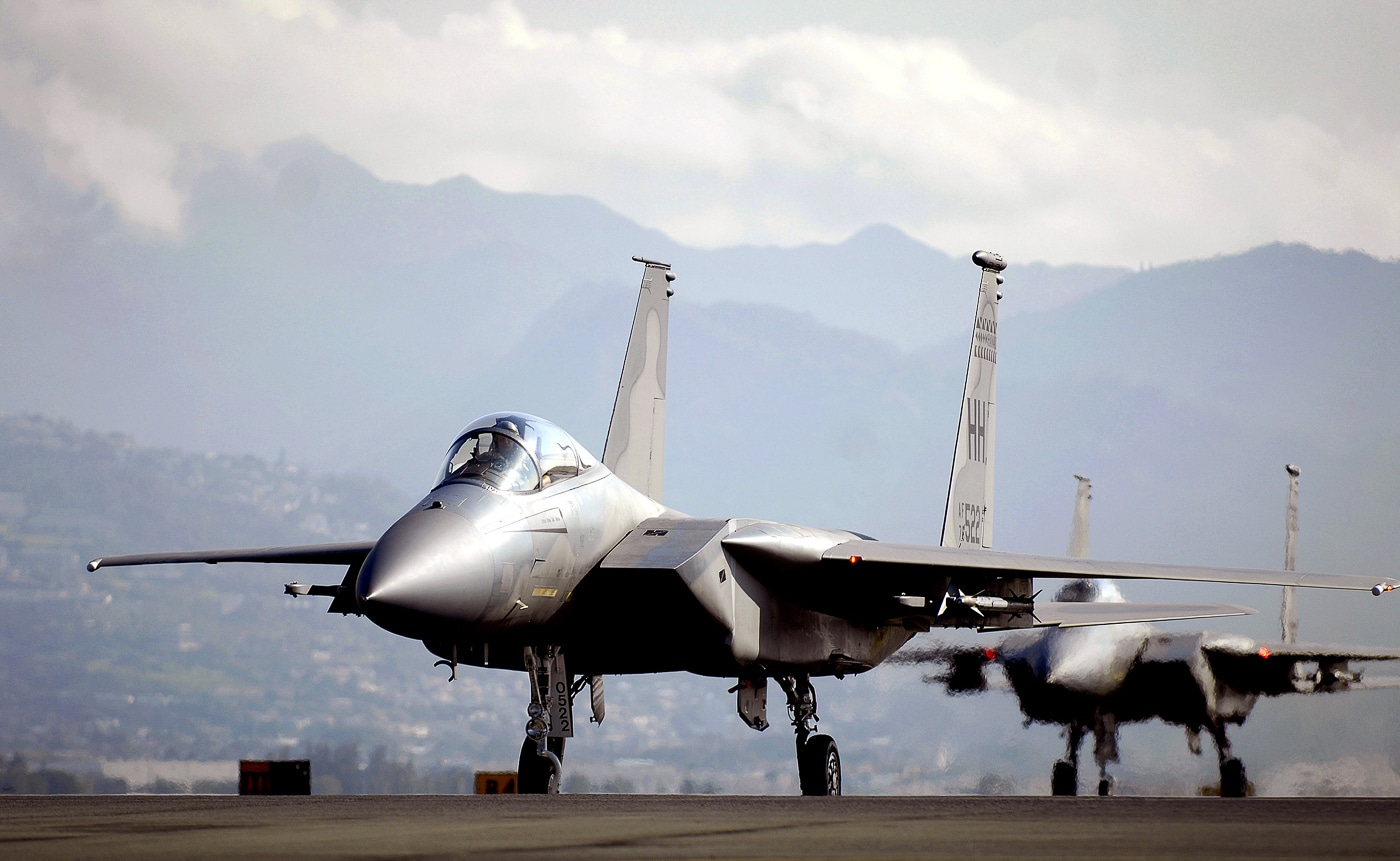
The capabilities of the F-15 were further put to the test with the IAF in early 1981, when Israeli intelligence determined that Iraq’s Osiark nuclear power plant would be operational by September of that year. Although the facility was being built with French and Italian assistance outside of the Iraqi capital of Baghdad, there were suspicions that it was part of a secret nuclear weapons program. Fearing that once the plant went online, Iraq could create enriched uranium and weapons-grade plutonium, the Israel Defense Force (IDF) determined it would be necessary to do something, fearing that it would be the prime target for a nuclear attack.
Baghdad was more than 685 miles (1,100 km) from Israel. Still, the IDF determined a strike was possible, employing its F-15 Eagles and the newly acquired F-16 Fighting Falcons, which had previously been destined for Iran before the Islamic Revolution of 1979.
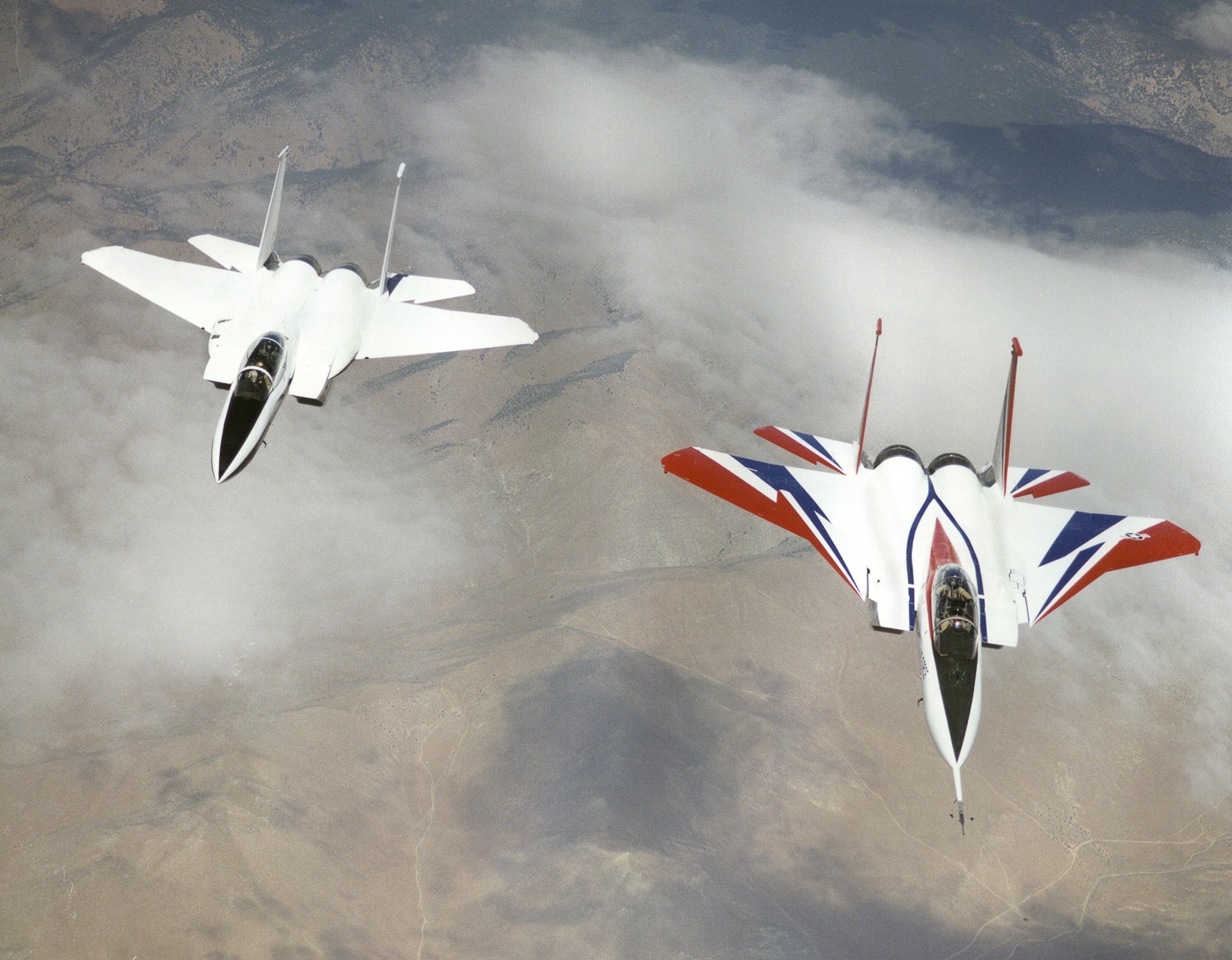
The IAF undertook meticulous preparation, where its very best pilots flew rehearsal flights against full-scale mock-ups of the target. It was likely comparable to the mission in Top Gun: Maverick, but with added challenges. General Rafale briefed the pilots and stressed the importance of what was dubbed Operation Opera, reportedly telling the aviators that success was vital, as “the alternative is our destruction.”
On June 6, 1981, six F-15 Eagles provided aerial fighter cover for eight F-16 Fighting Falcons, each of which carried two 1,000 kg (2,205 lb) bombs. The aircraft took off from Etzion Air Base and flew low-level across the deserted sections of Jordan and Saudi Arabia, maintaining speeds that were best suited for conserving fuel.
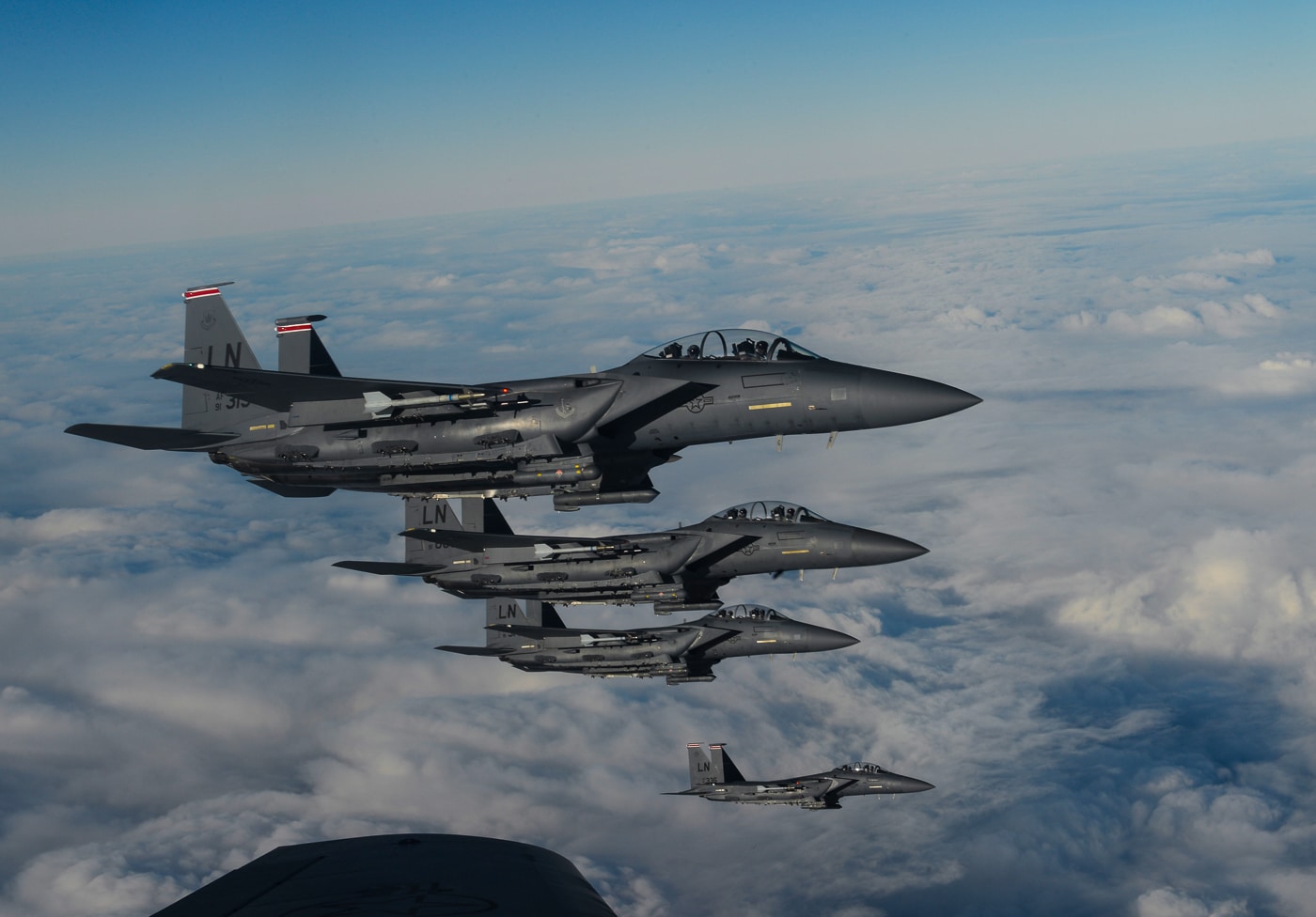
It has been reported that King Hussein of Jordan, who happened to be vacationing in the Gulf of Aquaba, had witnessed the planes as they flew over his yacht. He deduced that the Osirak nuclear facility was the target and contacted his government to warn the Iraqis. The message was never received, and just 80 minutes later, the IAF aircraft reached the facility. It is believed that all the Iraqi bombs struck the target, with just one failing to detonate.
Iraqi air defenses responded far too late to stop the IAF aircraft, which began their flight home. The attack aroused great public anger throughout the Arab world over Israel’s brazen attack, but there is speculation that, secretly, there was much relief as well. More importantly, the attack demonstrated the capabilities of the IAF and its American-made fighters.
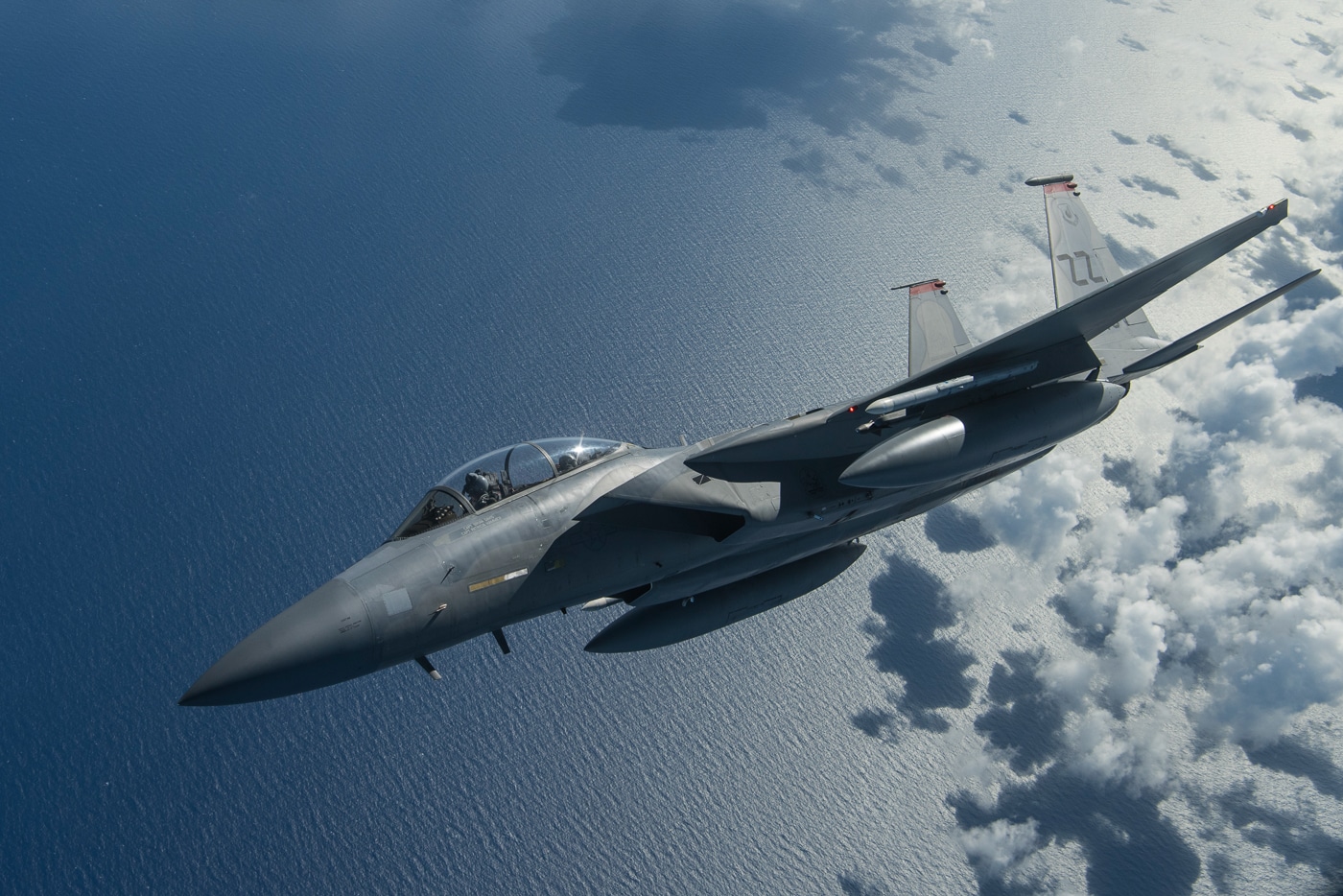
The F-16, not the F-15, was arguably the star of that show, but the F-15 ensured the F-16s completed the mission. More importantly, it would soon have its moment in the spotlight on more than one occasion.
The F-15 Destroyed the Syrian Air Force
One year after Operation Opera, Israel launched its invasion of Lebanon following a series of attacks and counterattacks between the Palestinian Liberation Organization (PLO) and the IDF. Operation Mole Cricket 19 was part of the opening stages of the conflict, which began on June 9, 1982. It involved a suppression of enemy air defenses (SEAD) campaign launched at Syrian targets. It was as one-sided as any of the engagements in the Israel-Arab Wars, where Israel achieved a stunning victory in the air.
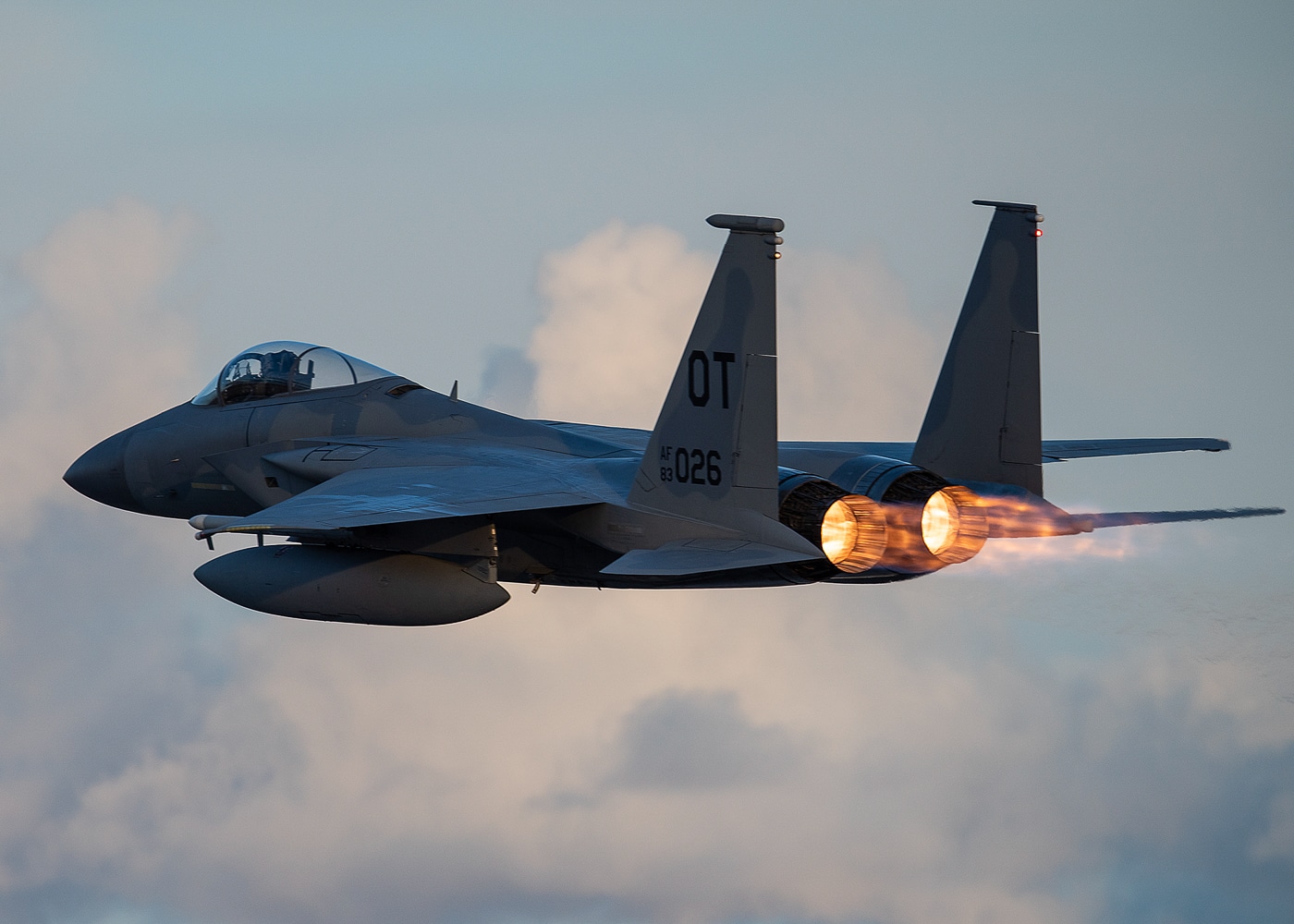
It not only marked the first time in history that a Western-equipped air force had successfully destroyed a Soviet-made surface-to-air missile (SAM) network, but it also witnessed one of the largest air battles since the Korean War.
In the course of just two hours, nearly 90 Syrian Air Force fighters, including MiG-21 and MiG-23 fighters, were destroyed. It contributed to the Eagle’s untarnished legacy and again proved the F-15 was the unmatched air superiority fighter of its day!
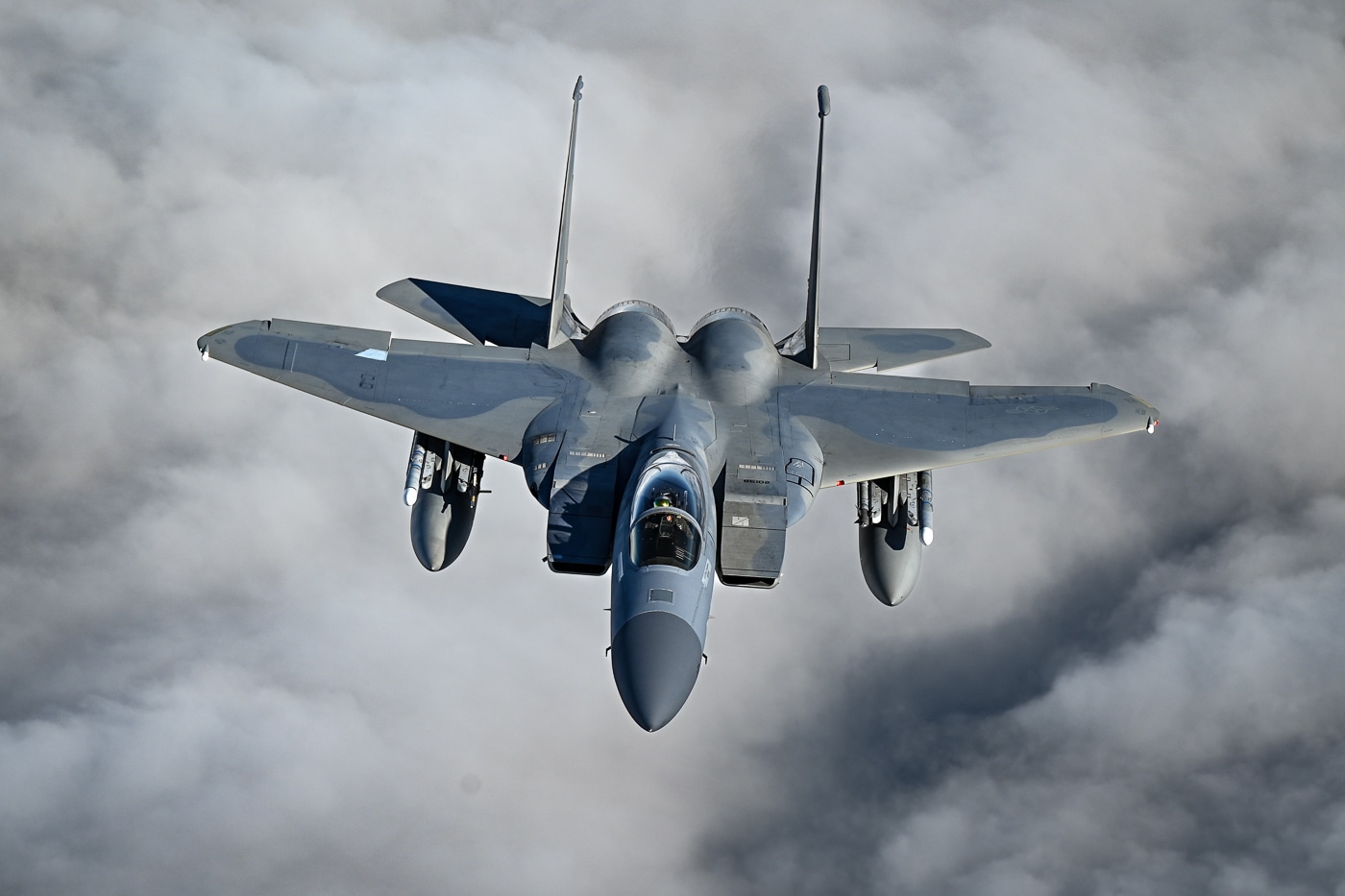
Yet, the IAF would further show the capabilities of the F-15 as a ground attack aircraft just a few years later.
Operation Wooden Leg
On October 1, 1985, Israel carried out another daring mission, this time in response to the murder of three of its citizens on a yacht off the coast of Cyprus. The perpetrators were quickly identified as operatives from Force 17, a terrorist unit of the PLO. In response, the IDF opted to target the PLO’s headquarters in Tunis.
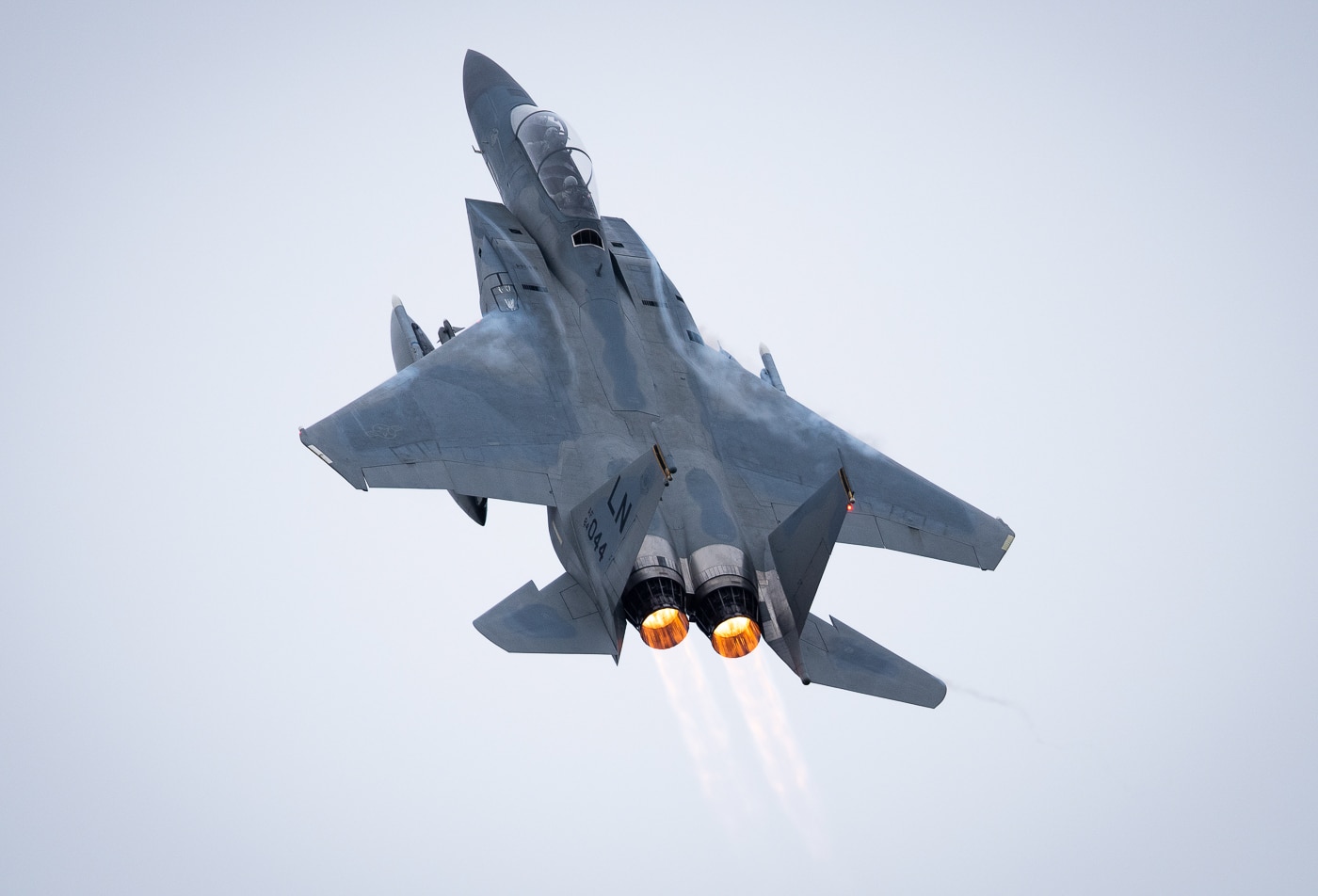
At nearly 1,250 miles (2,000 km) from Israel, it was roughly double the distance from the strike on Iraq. It was determined that the two-seat F-15B/D Eagle, or Baz as the Israelis designated it, would be best suited for the mission, given its extended range compared to the F-16. A total of ten, including six from the 106 “Edge of the Spear” Squadron and four more from the 133 “Knights of Twin Tail” Squadron, carried out the attack, with two serving as backup.
Dubbed Operation Wooden Leg, it was the longest strike mission in Israeli history to that point. The aircraft, which were refueled en route by a Boeing 707 tanker, flew across the Mediterranean and struck a building believed to house the offices of Yasser Arafat as well as Force 17.
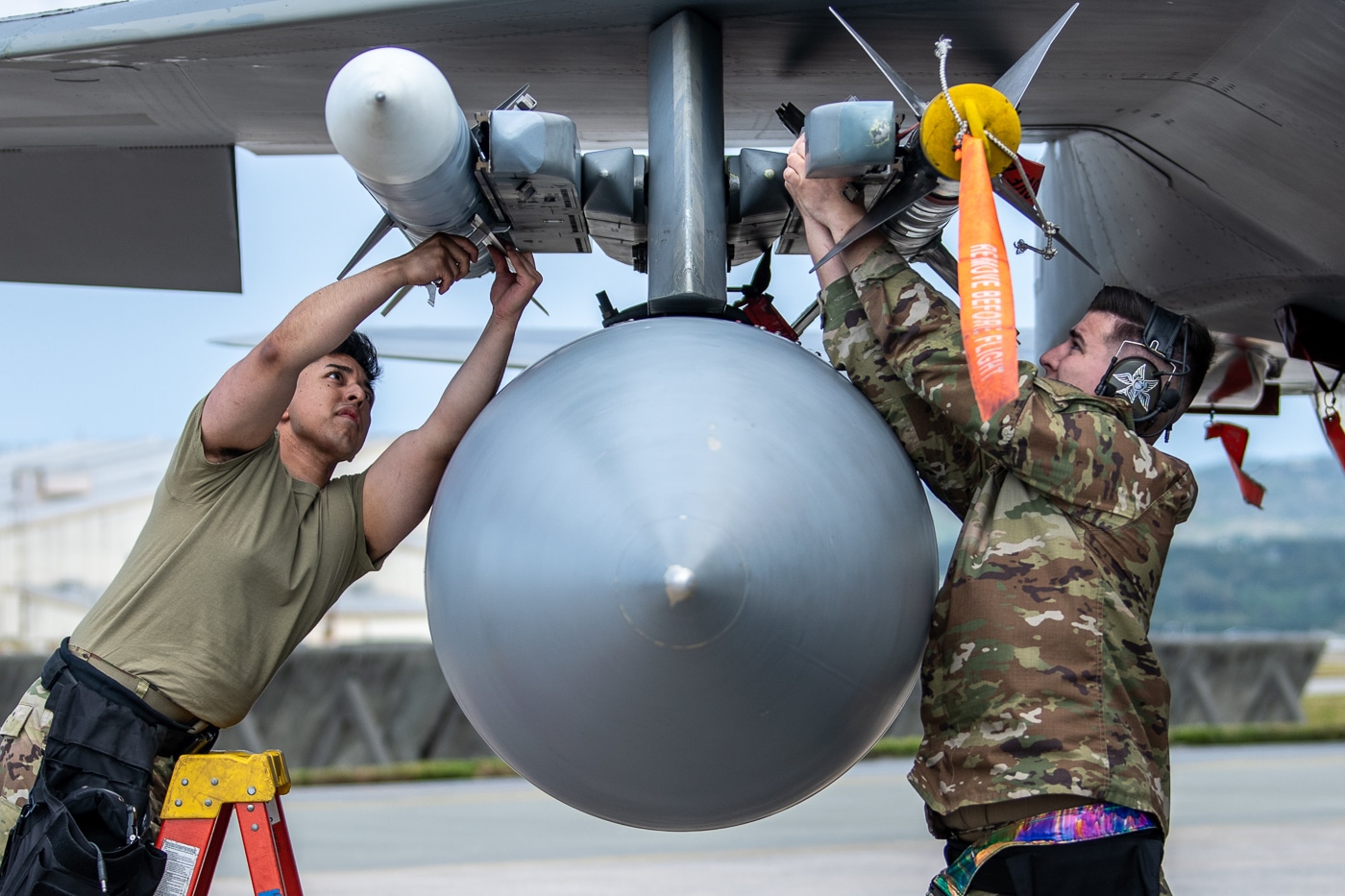
The biggest concern was the weather, as the Gulf of Tunis was covered in clouds when the aircraft arrived. However, it cleared as the fighters approached the coast, allowing the F-15 pilots to identify and target the PLO’s complex, attacking with complete surprise and deadly effect. All the targets were destroyed, including Arafat’s HQ and the barracks belonging to Force 17.
Not a single F-15 was lost in the mission.
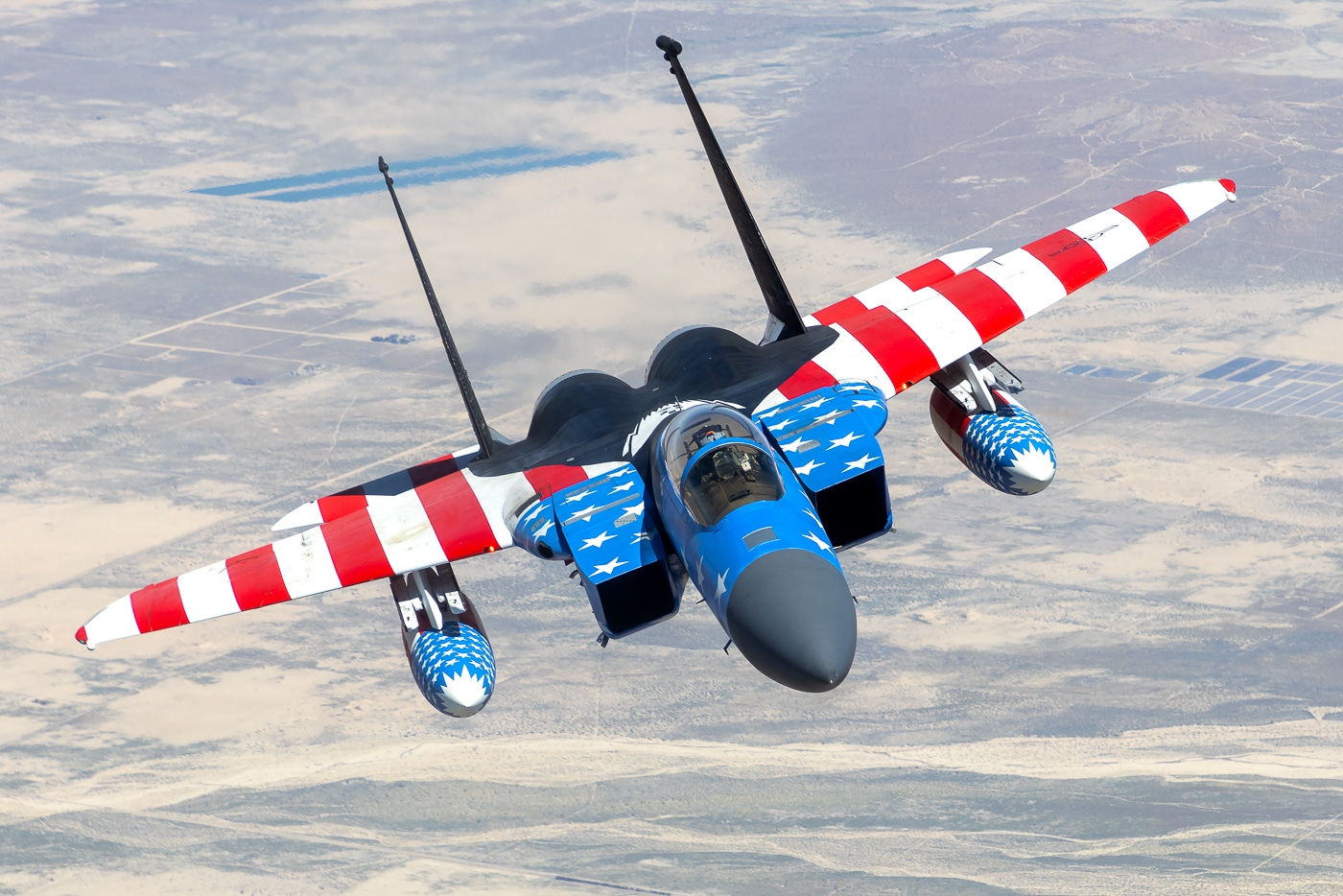
Although the UN Security Council voted to condemn the attack as a flagrant violation of the UN Charter, Israel had once again shown that it would retaliate for any action against it or its people, regardless of world opinion. The mission also highlighted that while the twin-engine F-15 was developed as a tactical fighter, its ground-attack capability was equally effective.
That helped lead to the development of the F-15E Strike Eagle, but that’s another story!
Editor’s Note: Please be sure to check out The Armory Life Forum, where you can comment about our daily articles, as well as just talk guns and gear. Click the “Go To Forum Thread” link below to jump in and discuss this article and much more!